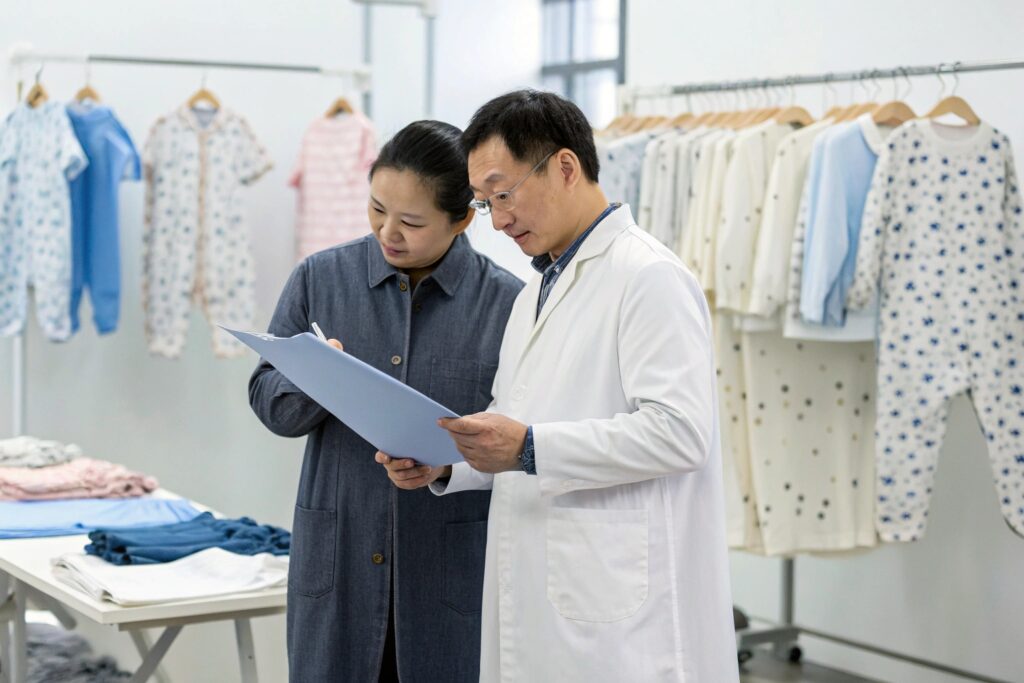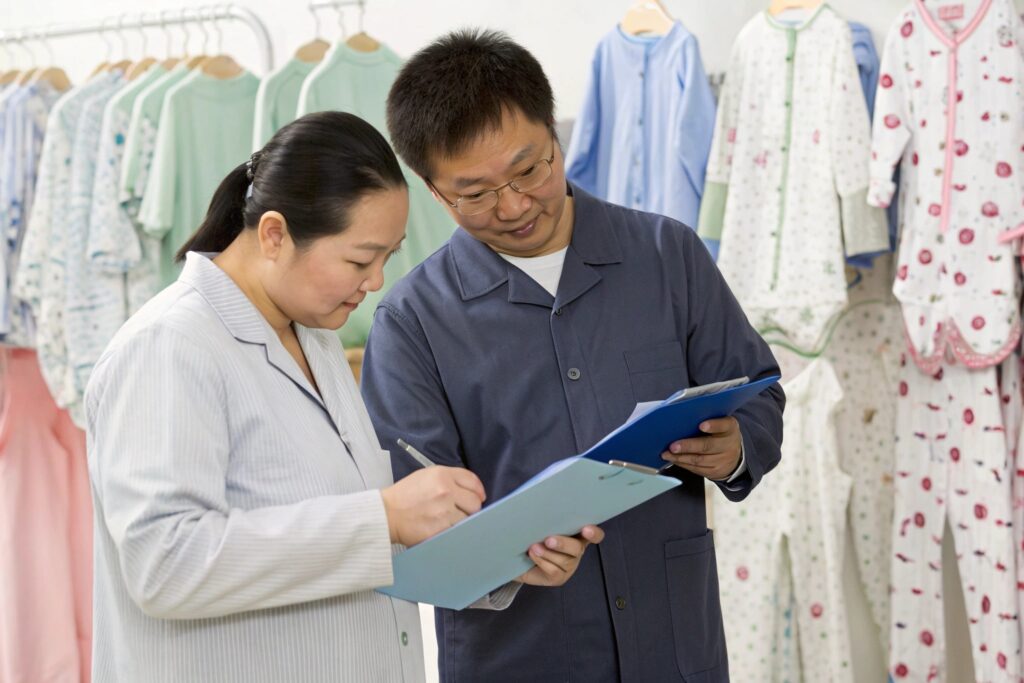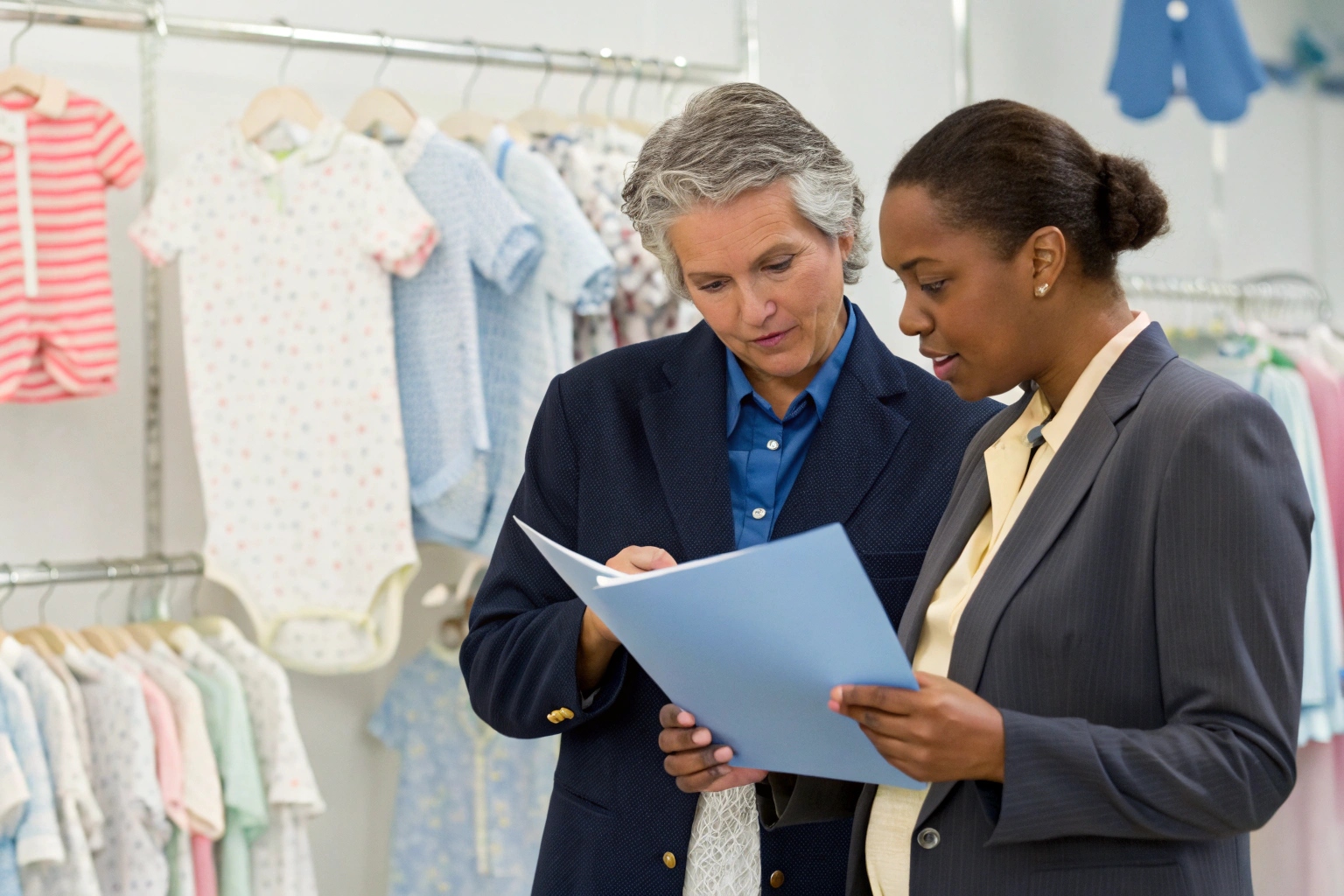For babywear brands selling globally, safety isn’t optional—it’s a must. One recall or failed inspection can damage years of brand-building.
We help babywear brands stay compliant with international standards by guiding certifications, testing materials, enforcing strict QC, and maintaining detailed compliance records for every order.
Here’s how our end-to-end compliance support protects your business and builds trust with parents and retailers around the world.
What Global Safety Certifications We Help You Meet?
Different countries have different rules—but babywear must always be safe. We simplify the process by helping you meet all the required certifications.
We support compliance with CPSIA (USA), OEKO-TEX®, GOTS, EN 14682 (EU), REACH, and other standards that ensure safety and traceability across major global markets.

What certifications do we support?
| Certification | Region | What It Covers |
|---|---|---|
| CPSIA | United States | Lead content, flammability, tracking labels |
| OEKO-TEX® Standard 100 | Global | Chemical safety for fabrics, threads, trims |
| GOTS | Global | Organic cotton & sustainable production |
| EN 14682 | Europe | Drawstring and cord safety in children’s wear |
| REACH | Europe | Chemicals, dyes, and heavy metal regulation |
We help brands interpret which certifications apply based on their selling region and product type. We also connect you with certified labs and provide supporting documentation.
What products typically need compliance?
- Onesies, rompers, bodysuits
- Sleepwear and pajamas
- Bibs, mittens, and hats
- Gift sets and bundled babywear
- Any garment for babies under 36 months
Our team ensures every item meets the highest safety standards before it ever leaves the factory.
How We Test Fabrics and Trims for Regulatory Compliance?
Safety starts with raw materials. That’s why we verify every fabric, thread, label, and snap before production begins.
We test babywear materials for harmful substances, choking hazards, and performance issues—using certified labs and our in-house quality protocols.

What do we test before production?
| Material/Test Area | Why It Matters |
|---|---|
| Fabric dye & chemical testing | Avoids allergic reactions, meets OEKO-TEX® and REACH |
| Snap/button strength | Prevents choking risks (ASTM & CPSIA standard) |
| Shrinkage and wash tests | Confirms durability and sizing compliance |
| Label safety & care info | Meets U.S. and EU label law requirements |
| Elastic and thread quality | Prevents skin irritation and breakage |
All tests are conducted either in-house with industry tools or through labs like SGS, Intertek, or TÜV upon request.
What certificates or proofs do we provide?
- OEKO-TEX® batch certificates
- GOTS transaction certificates
- Snap and seam strength test reports
- Colorfastness and pH reports
- Lead and phthalate test documentation for trims
We maintain a compliance file for each product and order—ready to submit to customs or retailers on your behalf.
Our Quality Control Process for Export-Ready Babywear?
Certification alone isn't enough—every production batch must meet quality standards. That’s why we implement multi-layered QC for all export orders.
Our babywear QC process includes pre-production checks, inline inspection, final batch testing, and documented results—focused on safety and consistency.

What does our QC process include?
| QC Stage | Purpose |
|---|---|
| Pre-production sample check | Approve fit, trim placement, stitching type |
| Fabric inspection | Check color, weight, stretch, consistency |
| Inline QC during sewing | Fix defects before they multiply |
| Final 100% inspection | Measure size, snap pull test, label check |
| Random pull & wash test | Verify post-wash shrinkage and durability |
We use QC checklists customized for babywear, including extra checks for:
- Neckline flexibility
- Snap closure durability
- Seams in sensitive areas (shoulder, waist, ankle)
- CPSIA tracking label location and accuracy
What happens if QC finds an issue?
- Minor: fixed on the spot
- Major: quarantined, corrected, rechecked
- Critical: reported to client with photo and video evidence
Our goal is to prevent rework, delays, and customs issues—saving you time and money in the long run.
How We Track and Document Compliance for Every Order?
A product is only as good as its paper trail—especially for global shipping. We treat documentation as seriously as production itself.
We create a digital compliance folder for every babywear order, including certification copies, testing reports, and shipment-ready documents.

What’s in our compliance folder?
| Document Type | Included For Each Order |
|---|---|
| Fabric certifications | OEKO-TEX®, GOTS, mill batch numbers |
| Trim testing results | Snap strength, lead, phthalate reports |
| CPSIA tracking label | Design template and placement photo |
| Inspection checklist | Size chart, trims, seams, packaging |
| Shipping docs | Packing list, invoice, HS code, COO |
These files are stored securely and shared with the client. You can use them to satisfy customs inspections, Amazon seller requirements, or retail onboarding.
How do we maintain transparency?
- All reports are time-stamped and traceable
- We share sample photos and inspection videos before shipment
- Each box includes printed QC seal and tracking label compliance checklist
- DDP (Delivered Duty Paid) clients get customs-ready files with HS codes and COO
This system helps our clients avoid delays, rejections, or penalties—while giving retailers peace of mind.
Conclusion
Staying compliant in babywear manufacturing takes planning, precision, and proof. We help brands meet global standards with tested materials, certified production, and full documentation—so every babywear order is safe, legal, and ready for export.










